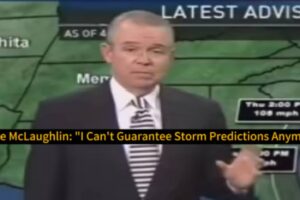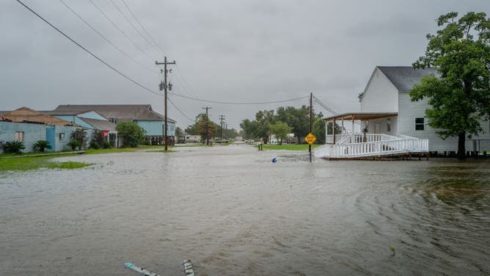Hurricane Francine, a powerful Category 2 storm, made landfall on the Louisiana coast Wednesday evening, cutting power to over 261,000 homes and businesses. With sustained winds nearing 100 mph (155 kph), the hurricane slammed into Terrebonne Parish, approximately 30 miles southwest of Morgan City, at 4 p.m. CDT. Francine’s impact was immediate, flooding streets, snapping power lines, and toppling trees as it advanced inland.
Morgan City Fire Chief Alvin Cockerham described the situation as more severe than anticipated. “It’s a little bit worse than what I expected to be honest with you,” Cockerham said, noting the danger had forced the suspension of emergency operations. Coastal areas have been inundated with heavy rains and storm surges, raising fears of widespread flooding. Local news outlets broadcast scenes of water rushing into city streets and oak trees bending under the storm’s force.
Flooding and Power Outages Heighten Concerns in Louisiana
The storm’s arrival triggered fears of significant flooding, especially as it spread rain and strong winds across New Orleans and surrounding regions. TV footage from coastal communities showed waves battering sea walls and water flowing into urban areas. As the storm moved inland, more homes and businesses lost power, with widespread outages reported in Terrebonne, St. Mary, and Lafourche Parishes. Poweroutage.us reported that over a quarter-million customers were left in the dark, with the majority concentrated in coastal and adjacent inland parishes.
Local residents, like Laura Leftwich, hunkered down in their homes, facing the brunt of the storm’s fury. Sheltering just outside Morgan City, Leftwich recounted how the winds had torn down two birdhouses from her yard. “If the storm had been any more intense, I wouldn’t have the guts to look outside,” she said. Authorities have urged residents to stay indoors, with the National Hurricane Center warning that floodwaters could rise rapidly, posing life-threatening dangers.
Severe Rainfall and Flash Flooding Expected Across the Louisiana
The NHC has warned that parts of Louisiana could experience between 4-8 inches (10-20 cm) of rainfall, with some areas potentially seeing up to 12 inches (30 cm). The intense rainfall could lead to flash flooding, especially in New Orleans and surrounding areas in Louisiana. In addition to the heavy rain, the NHC warned of life-threatening storm surges along the Gulf Coast, with water levels expected to rise by as much as 10 feet (3 meters) in some areas.
Residents in southeastern Louisiana, southern Alabama, Mississippi, and western Florida were placed on high alert for both flash flooding and tornadoes. “Now is the time to stay inside and away from windows,” the NHC advised. The flooding threat is significant, with urban areas at risk of facing considerable water damage, especially in flood-prone regions such as New Orleans. As a precaution, flights at the New Orleans airport were canceled, and evacuation orders were issued for several coastal parishes
Francine Weakens but Continues to Threaten Inland Regions
As Hurricane Francine moved northeast, it began to weaken, with sustained winds dropping to 75 mph (120 kph) three hours after landfall. However, the storm remained dangerous as it advanced toward New Orleans, bringing drenching rains and raising the threat of flash flooding. Meteorologists predict Francine will continue to lose strength but still cause damage as it pushes through Mississippi and Alabama over the next few days.
Cities like Jackson, Mississippi, and Birmingham, Alabama, could see as much as 8 inches (20 centimeters) of rainfall, with some areas potentially experiencing up to 12 inches (30 centimeters). This deluge could result in flash floods, adding to the already significant risks posed by the hurricane. The storm also threatens to trigger spin-off tornadoes across the region.
Emergency Response and Federal Aid Mobilized
Louisiana Governor Jeff Landry announced that the National Guard had been deployed to assist in storm response and recovery efforts. High-water vehicles, boats, and helicopters were stationed throughout affected areas, prepared for potential search-and-rescue operations. “We are fully mobilized and ready to assist our citizens through this storm,” Landry said, emphasizing that resources were in place for immediate action once the storm subsides.
President Joe Biden has granted an emergency declaration for Louisiana, expediting federal funding and resources to help the state cope with the disaster. Mississippi Governor Tate Reeves followed suit, declaring a state of emergency as the storm is expected to cross into his state. In preparation, the Mississippi Emergency Management Agency distributed over 100,000 sandbags and issued school closures across the southern region. Despite weakening, Francine remains a significant threat, with storm surge warnings of up to 10 feet (3 meters) along the Louisiana coast.














